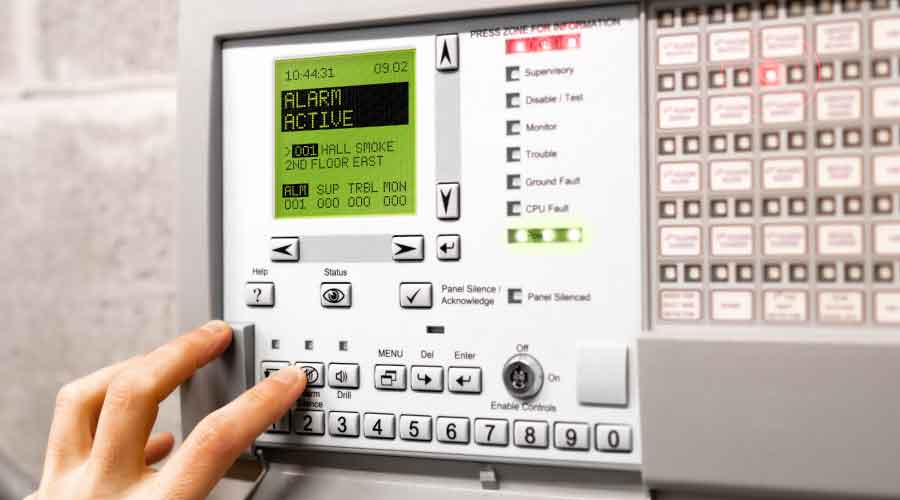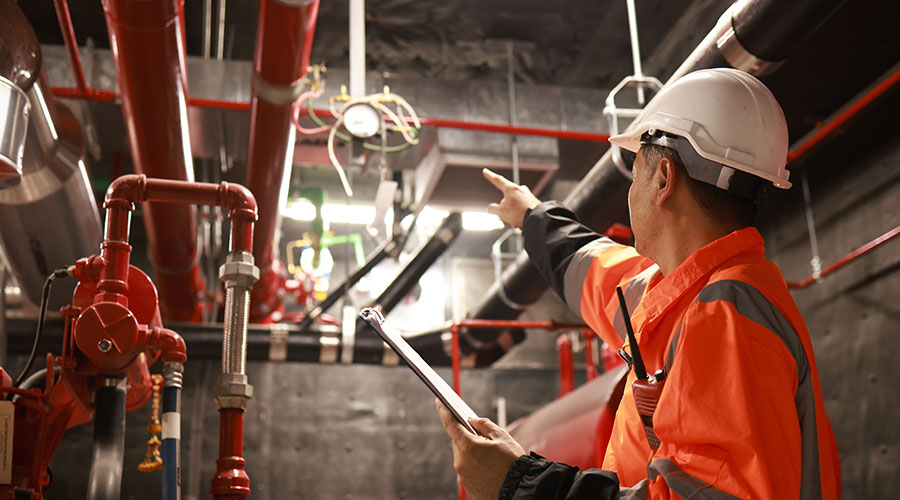What Triggers a Fire and Life Safety Code Review?
Understanding the rules around fire and life safety code can ensure a resilient, code-complaint facility.
By Ray Bizal, Contributing Writer
Resilient buildings are critical to society. By committing to resilience, facility managers are also committing to the highest level of safety, where injury, death, property loss, and business loss can be significantly limited in the case of an emergency. A crucial component of any facility resilience plan is compliance with fire and life safety codes and standards.
To ensure compliance with codes and standards throughout new construction, changes in use and occupancy, or simply the passing of time, facilities must often perform code reviews. There are several things to consider during a code review: egress, fire sprinkler locations, fire alarm enunciation, the quantity and placement of fire alarm initiation and notification devices (such as pull stations or strobe lights), the flame spread and smoke development rating of textile wall coverings — just to name a few. It’s a process that demands accuracy and collaboration.
As the trades continue to adopt digital transformation, it’s important that emerging digital tools are leveraged throughout the code review process to ensure efficiency and effectiveness. On the construction site, time is money. And with trades teams understaffed and overworked across the board, it’s more important than ever to lean on technology to get the job done right and drive efficiency towards resiliency.
What triggers a code review?
The intensity of a code review can range from a small check-up to a massive undertaking; it all depends on what is being done within the facility. Below are the three main catalysts for a code review:
- Tenant improvements. Any type of renovation, or tenant improvement (TI), should trigger a code review. To undergo a TI, which can range from adding a window to moving a wall to constructing a new wing, facilities personnel must inform their local building department and obtain a building permit. This generally spawns a code review. Before performing any type of TI, the facility manager or contractors will need to clearly identify what they’re planning to do and how it will affect fire and life safety codes and standards. For example, will moving a wall affect the fire sprinkler system? Will adding a room oblige them to meet new egress or fire alarm requirements? These are important fire and life safety code considerations that accompany all TIs, large and small.
- Change in storage arrangement, storage commodity, or occupancy. In warehouse settings particularly, a change in storage arrangements or the commodities stored therein can trigger a code review, as this is a change in the use of the permitted occupancy. Facility managers will need to assess how these changes affect fire and life safety, ensuring that the fire suppression system is adequate given the new arrangement. We see this often in the retail sector as well, where stores are constantly changing displays and introducing new products to their storehouse and display shelves. Sometimes it is a change in occupancy that causes a review. If a new warehouse tenant wants to convert a storage occupancy into an industrial production line, for example, that will certainly trigger a huge code review.
- Inspection by the AHJ or insurance carrier. Often, inspectors, authorities having jurisdiction (AHJs), or even insurance carriers will raise a question to the facility manager or point out something within the facility that needs further examination. The onus is then on the facility team to perform a code review to best address those questions or concerns and identify what (if any) action needs to be taken. Large corporations can receive inspections up to several times per year depending on their facilities, so it’s common for fire departments, insurance carriers, or AHJs to proactively raise concerns that trigger a code review.
Driving efficiencies
The code review process generally adheres to the following steps: First, relevant stakeholders (e.g. the facilities team, architect, warehouse manager, mechanical, plumbing, and fire protection engineers, etc.) gather at a pre-design meeting to identify what exactly they plan to do. Once they have a firm grasp on their plans, they perform a code review to ensure they’ve addressed the relevant fire and life safety considerations. The facility’s team can then approach the AHJ and apply for necessary permits to move the project forward.
When working with the AHJ, it’s critical that facilities teams demonstrate they have been thoughtful and thorough in order to build respect and camaraderie between the two parties. AHJs need to know that the facility has the safety of its employees and customers top-of-mind and has brought together the fire and life safety ecosystem accordingly.
The code review process demands a thorough understanding of the code, collaboration between several parties, precise documentation, and unwavering accuracy. Therefore, it’s important that teams are able to drive efficiencies within this process in order to move quickly and put their best foot forward to the AHJ. In today’s digital era, facilities teams should absolutely be leveraging digital tools to streamline this process.
Ray Bizal is director of regional operations for NFPA. He oversees the Canadian and U.S. Regional Directors, who provide outreach to NFPA stakeholders regarding the many activities undertaken by the association. With over 30 years in the fire protection profession, Bizal also worked at the Lockheed Missiles and Space Company Fire Department as a fire protection specialist, and Factory Mutual Engineering Association as a loss prevention consultant.
Related Topics:











